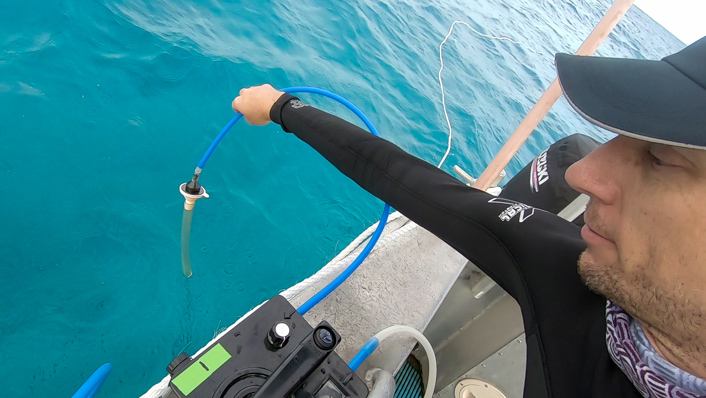For nearly 40 years, AIMS has monitored crown-of-thorns starfish on the Great Barrier Reef. Now, we are developing innovative approaches to strengthen monitoring efforts and improve efficiency.
Four decades of starfish monitoring
AIMS’ Long-Term Monitoring Program routinely monitors crown-of-thorns starfish (COTS) populations across the Great Barrier Reef, as part of providing comprehensive information on coral reef status and trends. This program provides critical data on starfish outbreaks and their progress along the Great Barrier Reef.
Each year, experienced observers survey up to 130 reefs, counting starfish abundance and coral cover around the perimeter of each reef.
This information is provided to the Great Barrier Reef Marine Park Authority to better understand the progress of outbreaks, and to support identifying reefs for targeted crowns-of-thorns starfish control measures. The data also supports ecological studies identifying potential drivers of outbreaks, such as water quality and predation.
(based on data from AIMS LTMP)
Early detection of starfish using eDNA
Standard in-water crown-of-thorns starfish survey methods cover a wide area and are great for broad scale surveys of reefs. These standard survey methods are useful for identifying imminent outbreaks, or for monitoring the progression of existing outbreaks.
However, when crown-of-thorns starfish are at low population densities, they can be difficult to spot due to their cryptic (hidden) nature and nocturnal preference.
AIMS is applying aspects of invasive species management to the starfish problem. This approach requires more sensitive methods to identify reefs at risk from subtle increases in crowns-of-thorns starfish population densities before they reach outbreak status.
Early detection = Early intervention
To assist with detecting outbreaks early and efficiently, AIMS scientists are developing DNA detection tools for crown-of-thorns starfish, which works without needing to see a single starfish.
Environmental DNA, or eDNA, is a DNA-detection method which identifies the presence of organisms simply by sampling the environment for their DNA. AIMS scientists have developed tests to detect DNA shed by the starfish in seawater samples.
eDNA sampling for starfish complements standard visual survey methods by:
- detecting the presence of starfish no matter how small! eDNA sampling can detect microscopic starfish larvae, small juvenile starfish or hidden adults too difficult to be detected by eye.
- being carried out by non-experts at sea, and without the need to enter the water.
These advantages can help managers identify outbreaks early and cost effectively. When combined with emerging control techniques, eDNA monitoring could help prevent outbreaks establishing. This in turn would protect coral cover and reef community health.
AIMS scientists are working with tourism operators to get this technology out of the scientists’ hands and into the field.
This research is supported by the collaborative COTS Control Innovation Program, funded by the Australian Government’s Reef Trust and the Great Barrier Reef Foundation.
See below for details on our starfish eDNA research.
Tech upgrade for starfish surveillance
We're working with collaborators to improve crown-of-thorns starfish (aka COTS) surveillance support using smart technology.
A COTS Surveillance System is being trialled to provide accurate and immediate information to starfish control teams to guide where to concentrate control efforts.
Harnessing AIMS' ReefScan technology, a camera system is towed behind a boat, scanning the seafloor to assess starfish numbers and coral cover in real time using artificial intelligence. Areas with high numbers of starfish and high coral cover are flagged as priorities for the control team.
As well as providing real-time data, the tech-based approach helps to scale surveillance efforts beyond human-based monitoring and improves safety.
This project is being run in partnership with the CSIRO and is part of the collaborative COTS Control Innovation Program (CCIP), funded by the Australian Government’s Reef Trust in partnership with the Great Barrier Reef Foundation.





